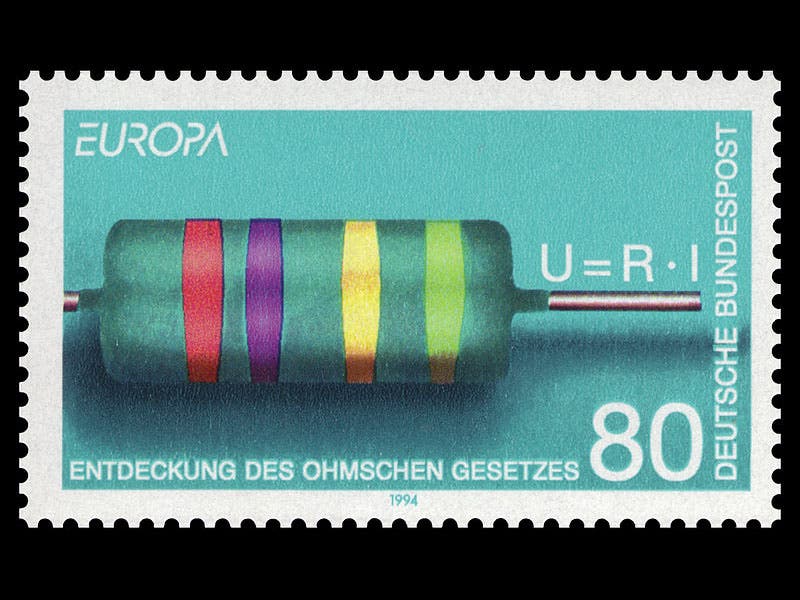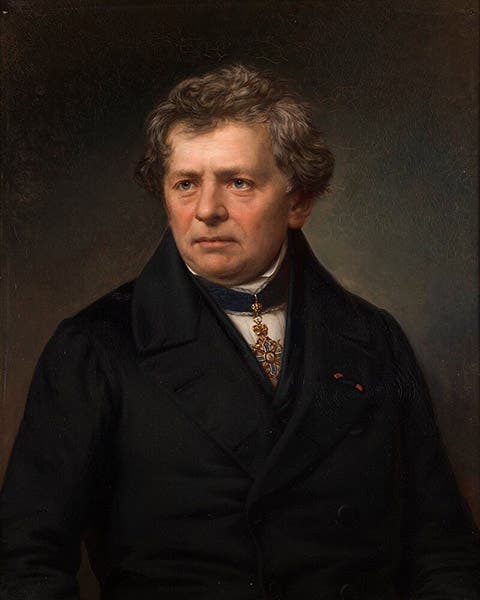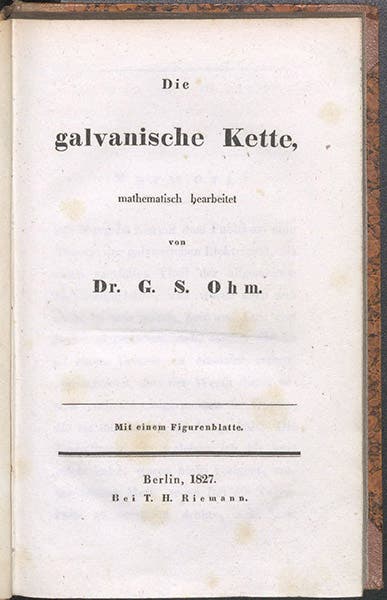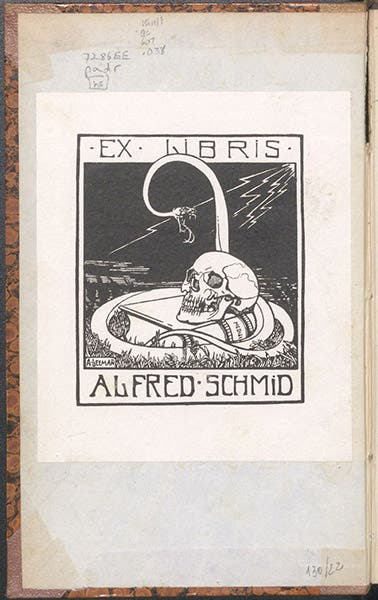Scientist of the Day - Georg Ohm
Georg Simon Ohm, a German physicist and mathematician, was born Mar. 16, 1789. Ohm was attracted to the mathematical physics of Joseph Fourier, who had recently produced a complete mathematical theory of heat, but Ohm was also interested in the brand-new discoveries, by André-Marie Ampère and Hans Christian Oersted, that electricity and magnetism are related.
In 1825 and 1826, Ohm did an elegant set of experiments in which he tried to determine how the thickness and length of a wire, and the metal from which it is made, affects its ability to conduct electricity. Using a compass needle placed near a wire as a measure of electrical current (ammeters had not yet been invented), Ohm discovered that, for a given wire, the current through the wire is proportional to the strength of the battery (we would say the voltage), but that for other wires, the current might be different for the same voltage. He formulated this as a law: the voltage divided by the current is equal to a quantity that we now call “resistance.” This law, universally recognized as Ohm's Law, can be written more simply as V = IR, where I is the current.
Ohm’s law was announced in 1827 in a book titled Die galvanische Kette, mathematisch bearbeitet (The electrical circuit, mathematically determined). When I published the first version of this post, in 2017, I lamented that we did not own Die galvanische Kette, and that we were unlikely to obtain it, as it was always over-priced on the market. I am happy to report that, over-priced or not, we have bitten the bullet and acquired an exceptionally fine copy of the first edition of Ohm’s book. We show here images of the title page, the front cover, and the rather macabre bookplate of a former owner, Alfred Schmid, who, for a physician, was perhaps overly fascinated by Death.
There is a color portrait of Ohm on Wikipedia that they took from a German Facebook entry (second image); it is not clear where this is, perhaps in the Bavarian Academy of Sciences or the National Museum in Munich. It is the source for nearly all images of Ohm. There is a statue of Ohm in Munich (sixth image). When Germany issued a series of postage stamps in 1994, commemorating famous (German) scientific discoveries, Ohm's law was one of the honorees (first image), although they chose to illustrate a resistor rather than Ohm. The large symbol on the plinth of the statue is the Greek letter omega, the symbol for the ohm, the international (SI) unit of resistance.
This is a revision of a post that first appeared on Mar. 16, 2017. Part of the text has been rewritten to reflect our acquisition of Ohm’s book, new images have been added, and captions have been provided for all images.
William B. Ashworth, Jr., Consultant for the History of Science, Linda Hall Library and Associate Professor emeritus, Department of History, University of Missouri-Kansas City. Comments or corrections are welcome; please direct to ashworthw@umkc.edu.












